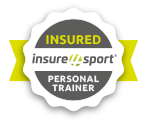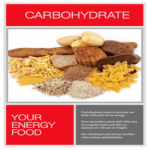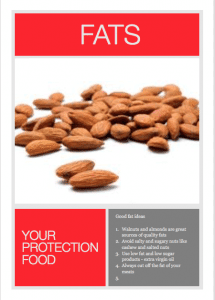The mental challenge
The hardest one of them all
As we approach 2017, I tend to focus my mind on what new challenges I want to take on and what new challenges my clients may want to consider for the New Year.
It is not about setting new personal bests (PBs) or running a marathon. Marathons and six-pack training (my target for 2017) are great targets to have but it is more the mental side of how we prepare for the next twelve months.
The mental game I find is the hardest challenge of them all. Resisting tasty food, going swimming and doing 30 lengths or getting up at 6am in the winter to go training are all possible but they take a great deal of mental strength.
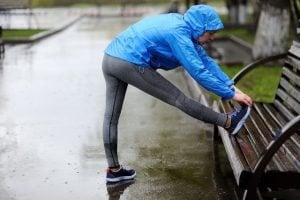
Is 2017 the year you will win over your brain and achieve something you’ve been meaning to do for the past 20 years or so?
Goals don’t work?
Before we know it, New Years resolutions would have started and stopped, the diet books for 2017 would have been downloaded but not read and the usual excuses are being made as to why we have not headed down the gym.
I have always said to my clients eat what you want during the festive period. You have to live and enjoy yourself. It goes without saying, however, the better food choices you make over the festive period and the harder work you put in at the gym, swimming pool or out on the bike will be rewarded.

Eating treats is great, eating smarter is better.
We may say goals don’t work and what a waste of time it was writing them down. In fact goals do work. You may not have achieved yours. Have a goal and work towards it. If you don’t succeed at first try again.
How to set a goal and achieve it
This blog focuses on ‘food eating’ goals predominantly. A huge mental challenge for many of us.
Helping clients to make better food choices is a service I provide. It is the one-thing clients come to me for. In many ways this does surprise me, as there is greater awareness around the food we eat, the types of meals we eat and the portion sizes we should be eating.
The purpose of this blog is to put the key seven nutrients firmly on the map and possibly help you when you are considering what to eat. The more we know about our food, the more likely we are to make the right food choices and win the mental battle.
I’ve purposely kept it simple, using pictures and a brief description on what the seven nutrients are all about. 75% of weight loss (fat loss to be precise) is down to the food we eat; the amount of food and when we eat our food.
Eat well, feel amazing. Eat badly, you lose the mental challenge.
Carbohydrate – our energy fuel
CHO or carbohydrates gets a bit of a rough ride as they contain sugar. This blog is not meant to inform you about everything to do with CHO but give you a snapshot of what it is, what we can eat and why we need to be careful when eating carbohydrates.
Exercise is crucial too when eating carbohydrates. After all this is why we eat carbohydrates. Carbohydrates provide us with a good amount of energy to help us get through a workout or even through a normal working day.
We need to ensure we burn off such foods as a lot of simple carbohydrates raise our blood sugar levels quickly and in the longer term leads to diabetes. Complex carbohydrates are the better type of carbs to eat. They make you fill fuller for longer and take more effort to breakdown. Read my handouts on breakfast ideas that includes information on carbohydrates.
Our main carbohydrates come from breads, pastas, rices and potatoes. Remember to try and select the wholegrain varieties if you can.
55% of our diet should contain carbohydrate. Many people avoid carbohydrate as they believe it contributes to weight gain. That’s because if we are not exercising the sugar in CHO will breakdown into fat and store itself throughout your body. Exercise, exercise hard and regularly, you will burn fat.
Protein – the recovery and muscle food
If we want to grow big muscles and aid recovery after a workout, protein will do just the job. Whilst not a great energy source, protein helps to promote muscle development and aids injury prevention.
15% of our diet should consist of protein. Good sources of protein include milk (semi skimmed or skimmed), low fat yoghurt, lean meats (chicken, beef and pork) and eggs.
Body builders eat a lot of protein, more than they should, which explains why so many of them have little energy. They eat little or no carbohydrate, however, everything they do eat is incredibly lean.
It may sound like mental torture but eating the right foods and weight training almost every day does bring its rewards especially if your goal is to tone up and improve that waist line.
My lunch handouts provide further ideas on good sources of protein.
Fat – good fats and bad fats
Like carbohydrates, fats gets a bit of rough ride too. Not all fat is bad. There is such a thing as a ‘good’ fat. For a start without fat, we would not be able to survive! Fats keep us warm and insulates our body. It plays an important role in protecting some of our vital organs too.
30-35% of our diet should contain fat. The simple rule of thumb is to avoid Trans and Saturated fats and eat more Monounsaturated and Polyunsaturated fats.
Nuts, spreads and oils all contain good fats. Read our dinner and healthy snack handouts which contains more information on good quality fats.
Vitamins and Minerals
Vitamins and Minerals are found in the animal and plant foods we eat. Whilst not the greatest sources of energy, it is vital we eat them as they perform specific roles. These roles are explained in my handouts below.
Vitamins
There are two types. Water and fat-soluble vitamins. Water-based vitamins, means any excess is lost through waste (our urine) whereas fat-soluble vitamins are stored in our liver for future use.

There are ten key vitamins we need to consume. In the following handouts, I provide some narrative and food ideas to ensure we eat plenty of them.
Minerals
Minerals are not the same as vitamins. They are inorganic for a start. This means they are not affected by heat exposure or light. However, like vitamins, they play a vital role in our existence and nutrition.
Good skin, white, healthy teeth and strong bones that name but a few.
Water
Water is a nutrient. We can live without food for a week or so as long as we drink plenty of water each day. We may go to the loo a lot more but water keeps us fuller for long and keeps us hydrated.
Being hydrated keeps our temperature in check but also helps with keeping our energy levels high. It also plays a vital role in transporting oxygen from the blood cells and lubricating our joints and organs too.
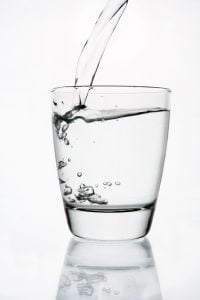
Try and reduce your cups of tea or coffee (less caffeine) and replace it with water. 6-8 cups of water each days or two litres.
As a coffee monster myself, I try to carry a water bottle around with me. That way, I always have water with me and there are no excuses if I am not filling it up regularly.
Fibre
The final nutrient is fibre. We find fibre in plant food only and there are two types. Soluble and Insoluble.
Soluble fibres help to reduce cholesterol and stop constipation. Eating plenty of cereals, fruit and vegetables will ensure you are consuming plenty of fibre. Bananas, apples, carrots and potatoes all contain this type of fibre.
Insoluble fibres do not dissolve in water unlike soluble fibres. This type of fibre keeps your bowel healthy and helps prevent digestive problems. Wholemeal bread, nuts and cereals all contain this type of fibre.
Fibre keeps you fuller for long but remember don’t go overboard on the potatoes or bread. They are carbohydrates after all and if you’re not exercising regularly you could put on weight.
